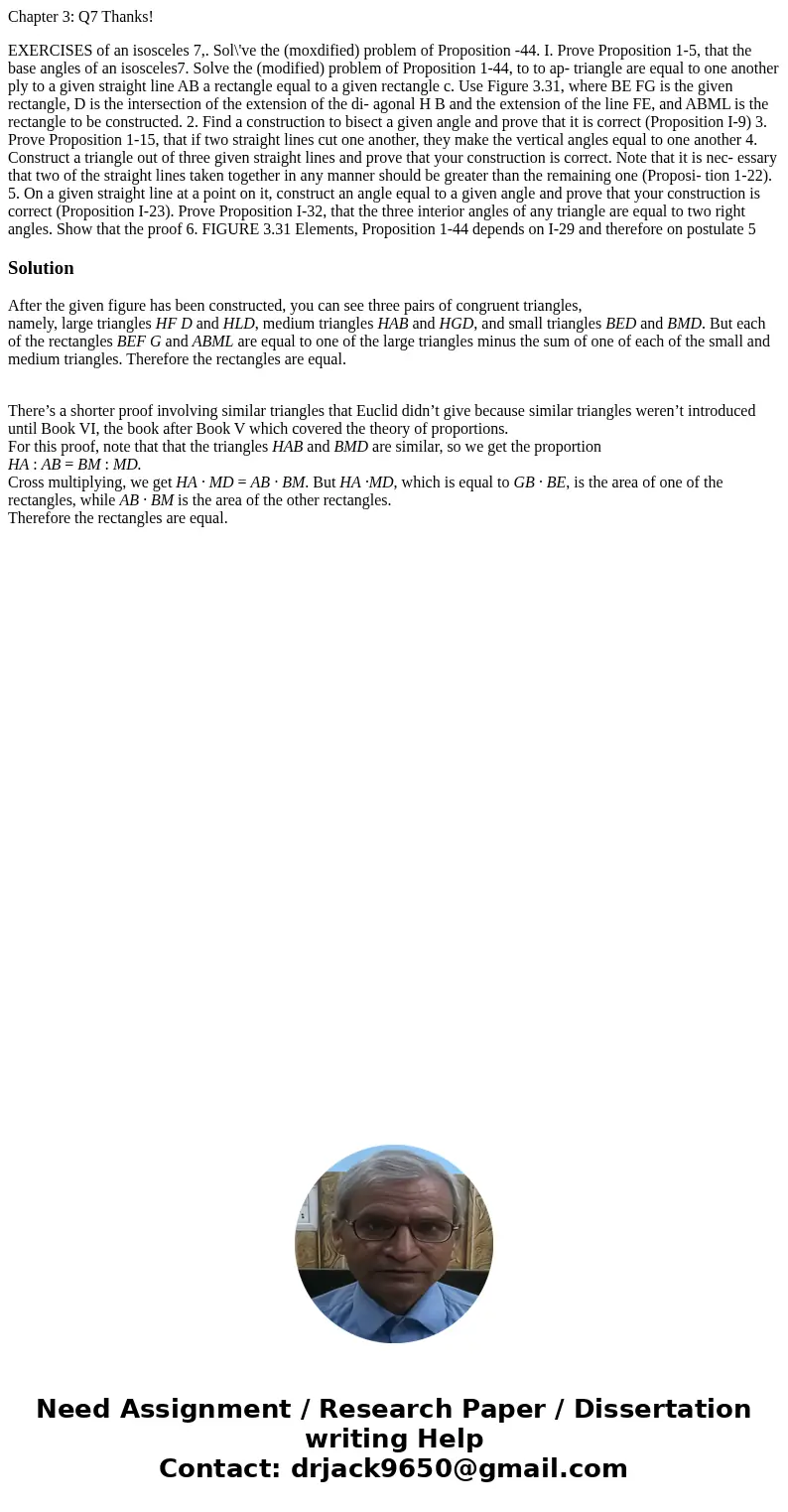Chapter 3 Q7 Thanks EXERCISES of an isosceles 7 Solve the mo
Chapter 3: Q7 Thanks!
EXERCISES of an isosceles 7,. Sol\'ve the (moxdified) problem of Proposition -44. I. Prove Proposition 1-5, that the base angles of an isosceles7. Solve the (modified) problem of Proposition 1-44, to to ap- triangle are equal to one another ply to a given straight line AB a rectangle equal to a given rectangle c. Use Figure 3.31, where BE FG is the given rectangle, D is the intersection of the extension of the di- agonal H B and the extension of the line FE, and ABML is the rectangle to be constructed. 2. Find a construction to bisect a given angle and prove that it is correct (Proposition I-9) 3. Prove Proposition 1-15, that if two straight lines cut one another, they make the vertical angles equal to one another 4. Construct a triangle out of three given straight lines and prove that your construction is correct. Note that it is nec- essary that two of the straight lines taken together in any manner should be greater than the remaining one (Proposi- tion 1-22). 5. On a given straight line at a point on it, construct an angle equal to a given angle and prove that your construction is correct (Proposition I-23). Prove Proposition I-32, that the three interior angles of any triangle are equal to two right angles. Show that the proof 6. FIGURE 3.31 Elements, Proposition 1-44 depends on I-29 and therefore on postulate 5Solution
After the given figure has been constructed, you can see three pairs of congruent triangles,
namely, large triangles HF D and HLD, medium triangles HAB and HGD, and small triangles BED and BMD. But each of the rectangles BEF G and ABML are equal to one of the large triangles minus the sum of one of each of the small and medium triangles. Therefore the rectangles are equal.
There’s a shorter proof involving similar triangles that Euclid didn’t give because similar triangles weren’t introduced until Book VI, the book after Book V which covered the theory of proportions.
For this proof, note that that the triangles HAB and BMD are similar, so we get the proportion
HA : AB = BM : MD.
Cross multiplying, we get HA · MD = AB · BM. But HA ·MD, which is equal to GB · BE, is the area of one of the
rectangles, while AB · BM is the area of the other rectangles.
Therefore the rectangles are equal.

 Homework Sourse
Homework Sourse